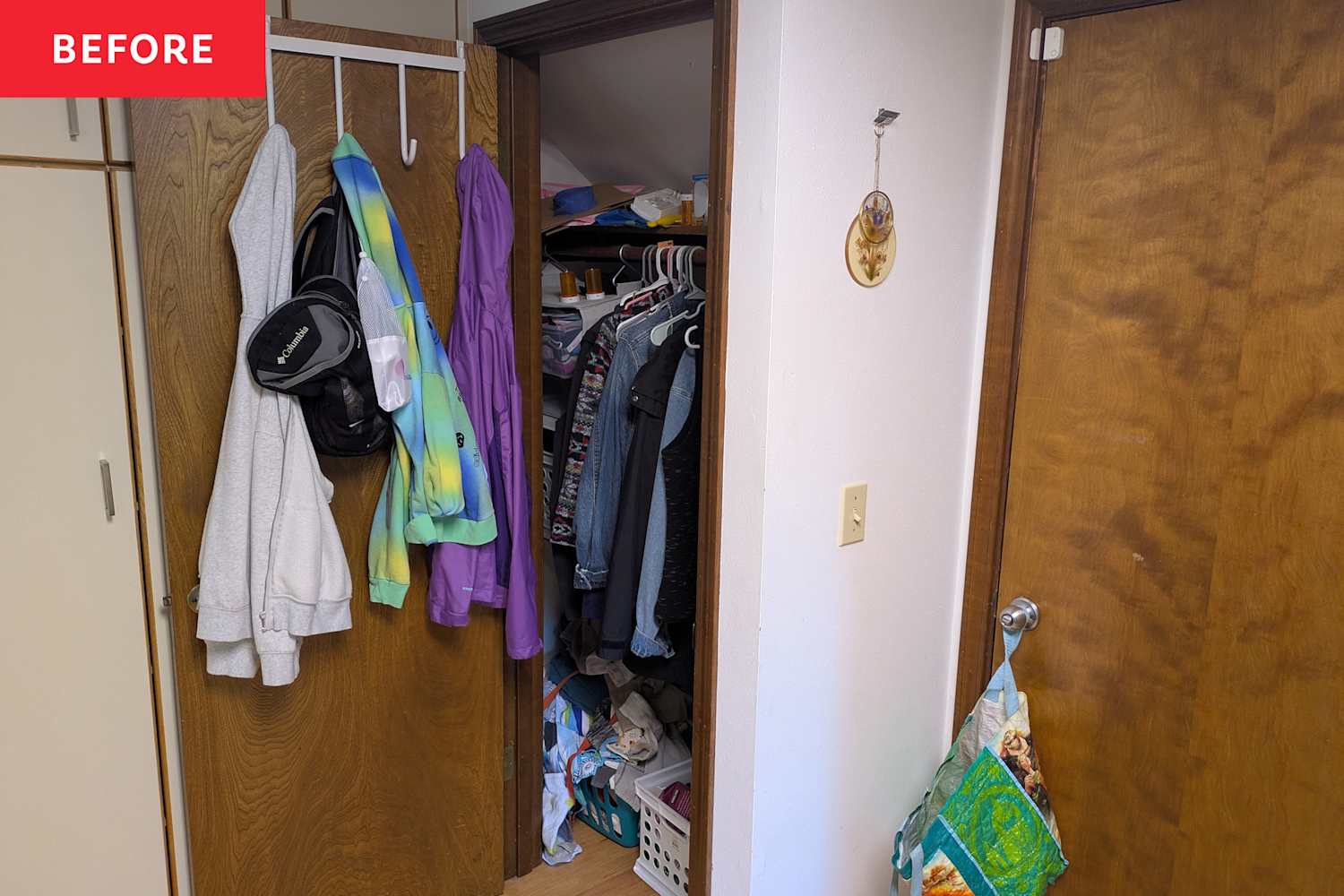
"I dreaded this part, but everything had to come out. Once I removed a sweater rack that had been holding masks and shopping bags, I could see how much space I was wasting. The masks moved to a different closet since we no longer need them daily, out-of-season coats went to the front-hall closet, and I recycled old prescription bottles through Ridwell and tossed what I didn't need. Clearing the top shelf alone made the closet feel instantly larger and easier to use."
"Prominski and I debated adding shelving. I measured, compared options, and realized new shelves would either require a shorter trash can or moving the trash can elsewhere. Instead of buying more storage right away, I used bins I already owned to corral smaller categories - soon to be filled with winter hats, gloves, and flashlights. That helped me figure out what really had to live in this closet and what could move elsewhere."
Clear the closet completely, removing all items to reveal wasted space and create a clean starting point. Remove unnecessary or infrequently used items: move masks to another closet, relocate out-of-season coats to the front-hall closet, and recycle old prescription bottles through Ridwell. Assess shelving needs by measuring and comparing options, considering trade-offs such as trash-can height or relocation. Use existing bins to corral smaller categories like winter hats, gloves, and flashlights to determine what must stay. Prioritize essentials—coats, hamper, and trash can—and repurpose furniture already on hand, such as a storage bench, instead of immediately buying new shelving.
Read at Apartment Therapy
Unable to calculate read time
Collection
[
|
...
]